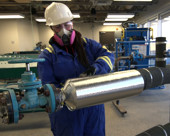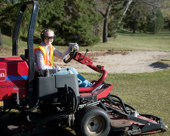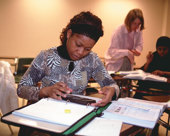You have options when it comes to paying for school. Most students fund their education with a combination of money earned, saved, and borrowed or awarded.
Thinking about going to university, college, or a polytechnic? Whether you’re fresh out of high school or a mature student, you’re probably wondering how to pay for your education. There are many costs to consider, so start by making a budget. Then, consider your options for how to cover your costs.
Most post-secondary students pay for their education through a combination of strategies:
- Getting help from family or friends
- Reducing expenses by living with family
- Using savings from jobs or investments
- Applying for scholarships, grants, and bursaries
- Applying for student loans or a student line of credit
- Studying part time and working full time
- Studying full time and working during summer breaks or part time throughout the year
- Taking co-operative education, apprenticeship, or applied degree programs that include paid employment
Learn more about these options below.
Work and save money
Knowing how much you can contribute to your education is a good place to start. Do you already have some money saved? Have your parents, guardians, or other family members put money in a Registered Education Savings Plan (RESP) for you?
Also, consider your options for earning extra cash while you study. This includes:
- Jobs and paid work
- Co-operative programs
- Apprenticeship programs
- Applied degree programs that include paid employment
Learn more about working and saving money to pay for school.
Apply for free money
There are organizations that will give you free money to help pay for school in the form of:
- Scholarships and awards
- Bursaries
- Grants
This money is different than student loans because you never have to pay it back.
Learn more about applying for free money to pay for school.
Borrow money
If you can’t cover the costs of school yourself, you may be able to borrow funds from the government or a bank. You can apply for:
- Student loans
- Student lines of credit
- Student credit cards
Learn more about borrowing money to pay for school.
More funding options
- Funding for upgrading and adult learning: If you’re 20 or older you may be eligible for support to upgrade or get training for a better job.
- Employment and Training Services Directory: If you’re unemployed you may be eligible for support to get training and find a new job.
- Employment Insurance (EI): If you’re eligible for employment insurance there are benefits to cover tuition fees and some training expenses.
- Indigenous students may be able to access band funding or apply for dedicated scholarships and bursaries.
- Canadian Armed Forces provide financing for some types of education.
- Employers: Some employers will pay for courses related to your work or allow you time off to attend classes. Discuss these options with your supervisor.
Paying for post-secondary is an investment in your future. A post-secondary education is likely to boost your income throughout your life. Knowing your options will help you and your family make the best choices for financing your education.















